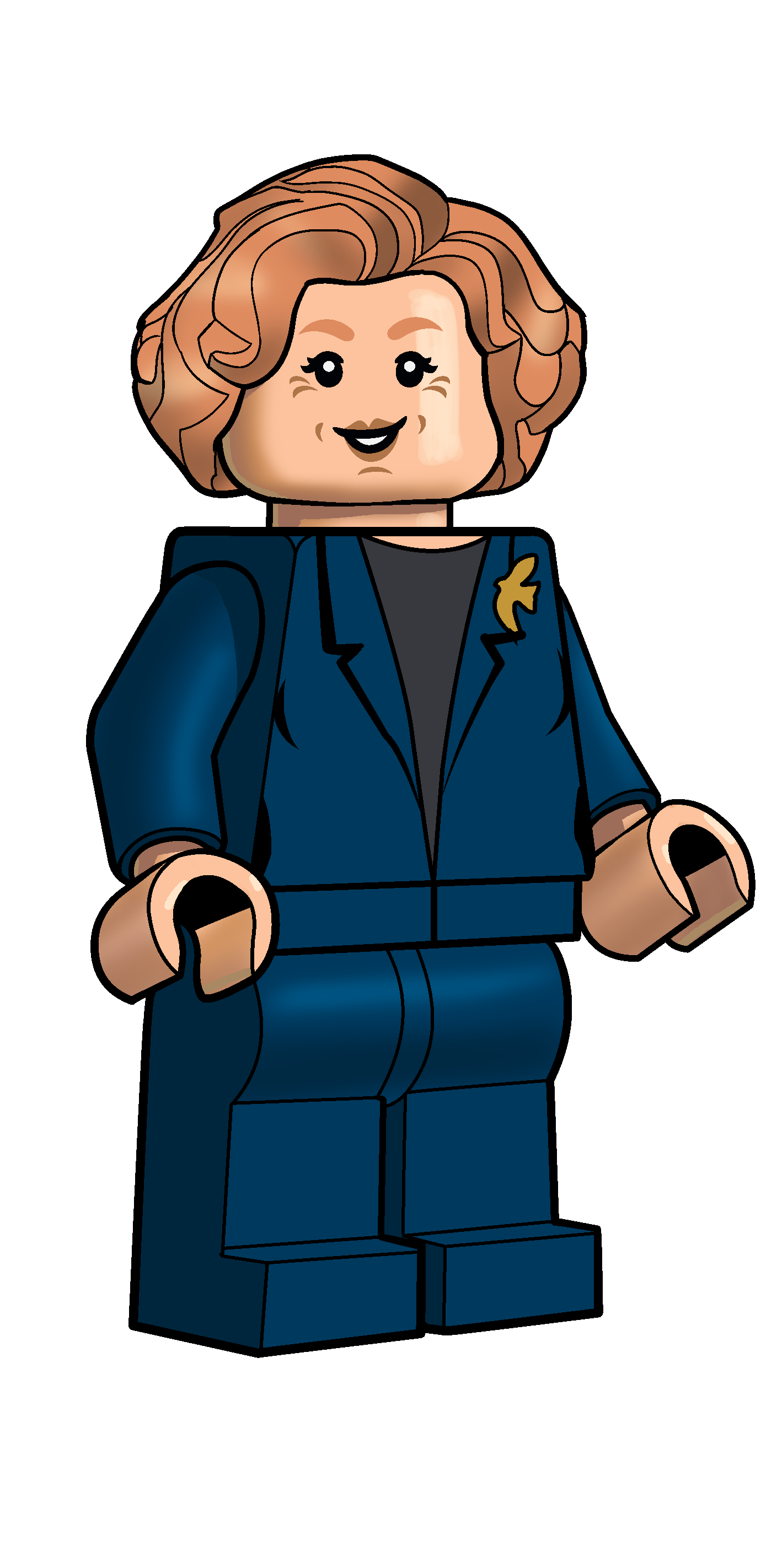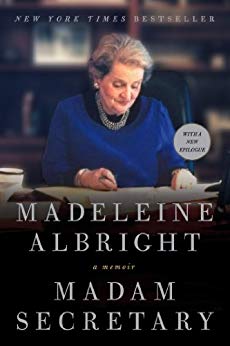MADELEINE ALBRIGHT
Diplomat, Peace-maker, Clever Wearer of pins
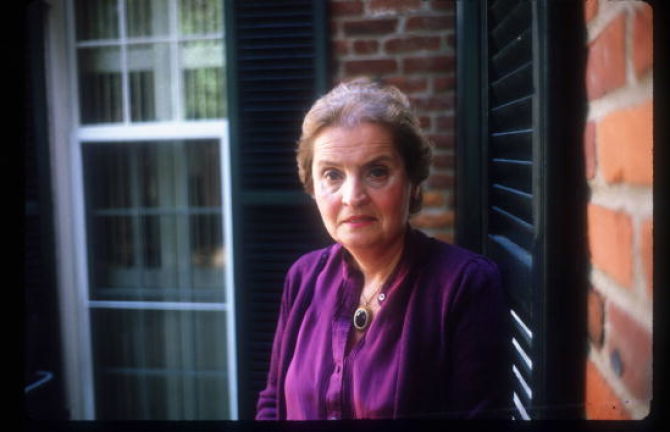
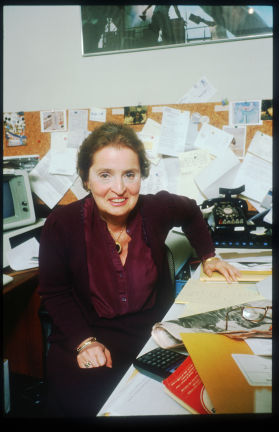
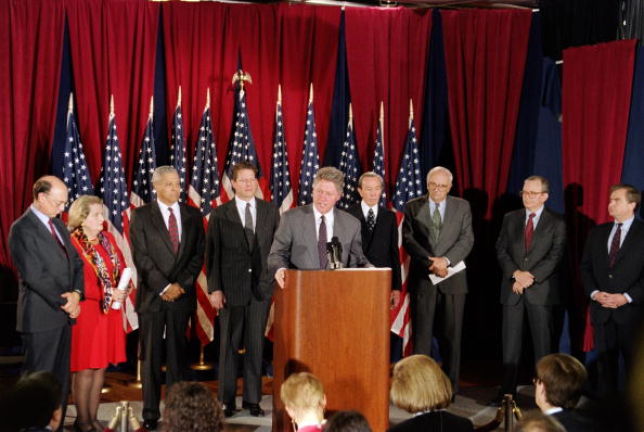
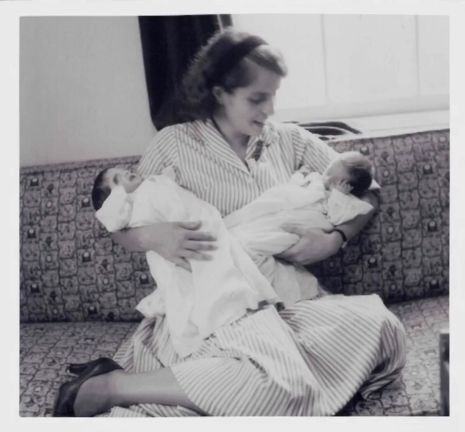
“Refugees should not be viewed as a certain burden or potential terrorists. They have already made great contributions to our national life.”
”What people have the capacity to choose, they have the ability to change.”
Madeline Abright was the first woman to be the U.S. Secretary of State. Her family fled Czechoslovakia in 1939 due to the Nazi occupation and again in 1948 due to the communist revolution. Her family settled in the United States, where Albright earned a Ph.D. and began a political career.
Coming to the United States as a refugee from Czechoslovakia, Madeleine Albright rose to the highest possible diplomatic ranks, serving as the US Ambassador to the United Nations from 1993-1997, and later as the first female Secretary of State from 1997-2001. At the UN, she negotiated with other ambassadors and as Secretary of State, she met and negotiated with world leaders. Known for her strong personality and sense of humor, Madeleine advocated for human rights throughout her diplomatic career, and paved the way for other women to assume the roles of UN Ambassador and Secretary of State. She remains active in the field of international affairs.
It’s no accident that Madeleine entered into a career of diplomacy, or that she spent so much energy trying to put an end to conflicts and restore human rights throughout the world. She was born Marie Jana Korbel in Prague, Czechoslovakia, 1937. Her family fled the country when she was a toddler, after the Nazis invaded. They settled in England during the war, moving back to Czechoslovakia afterwards, only to have to flee again when the Communists took over. Madeleine and her family arrived in the United States in 1948, and settled for good in Denver, CO. Her father, a former Czech diplomat, became a distinguished professor. Madeleine was raised Catholic, but later learned that her parents had converted to Christianity from Judaism, and that relatives of hers had died in concentration camps during the Holocaust. A brilliant, driven student, Madeleine entered Democratic politics as a legislative aide, working her way up behind the scenes until President Bill Clinton tapped her to be the United Nations Ambassador in 1993.
As US Ambassador to the United Nations, Madeleine Albright represented the interests of the United States. She served as one of 15 members of the UN Security Council, the diplomatic body in charge of maintaining peace and security. She formed relationships and negotiated with ambassadors from other countries, and developed a reputation for being a strong-willed straight-talker. In 1997, the US Senate unanimously confirmed her as the United States’ top diplomat around the world, and Madeleine became the first female Secretary of State. She worked with foreign leaders to curb nuclear weapons proliferation and restore peace in the Middle East and the Balkans. She held her Secretary of State post until 2001 and since then, she has written books, taught college classes at Georgetown University, opened an investment firm, served as an advisor to leaders and international organizations, and become chair of the non-profit organization The National Democratic Institute for Foreign Affairs.
Madeleine Albright’s style of diplomacy was a mix of multilateralism—working with partners around the world to get things done—and sly humor. During her time at the United Nations, Madeleine became known for her eccentric collection of pins and brooches. It started with a quote from Iraq. After the Gulf War ended, Madeleine pushed for sanctions against Iraq. Saddam Hussein’s authoritarian government did not take kindly to her efforts, and the state-run media called her an “unparalleled serpent.” As chance would have it, Madeleine owned a snake brooch, which she wore to her next meeting with the Iraqis. After that, she started collecting jewelry at flea markets, dime stores, anywhere she could find it. She would wear butterflies and flowers on good days, insects and carnivorous animals on bad days. Once, diplomats found a Russian listening device (a “bug”) hidden in a conference room near her office. Madeleine wore a bug pin the next time she saw the Russians. Another time, the Serbian dictator Slobodan Milosevic called Madeleine a goat. In response, she dug out a pin she got from the Naval Academy, whose mascot is a goat. Madeleine saw the pins as a form of non-verbal communication, and a good way to break the ice and get talks started. They also showed her personality.
Madeleine Albright once remarked “there is plenty of room in the world for mediocre men. There is no room for mediocre women.” She was the first female Secretary of State, and the second female ambassador to the UN. In meetings, she was often the only woman in the room. She had to be outspoken, fearing that if she was not, she risked creating the impression that she wasn’t prepared to be there. With skill and courage, Madeleine paved the way for women in diplomacy. Following her tenure, Condoleeza Rice and Hillary Clinton became the second and third female Secretaries of State, respectively, and Ann W. Patterson, Susan Rice, Rosemary DiCarlo, and Samantha Power have served as US Ambassadors to the United Nations. Madeleine Albright continues to be an important thinker in international affairs, and a strong advocate for women across the United States, and around the world.
Further Reading
- Melanie Garunay. "Email from Madeleine Albright: When I Was Welcomed as a Refugee." Obama White House Archives (https://obamawhitehouse.archives.gov/blog/2016/09/20/email-madeleine-albright-when-i-was-welcomed-refugee)
- Megan Gambino. "Madeleine Albright on Her Life in Pins." Smithsonian (https://www.smithsonianmag.com/arts-culture/madeleine-albright-on-her-life-in-pins-149191/)
- "Albright, Madeleine Korbel." UNHCR (https://www.unhcr.org/ceu/9406-albright-madeleine-korbel.html)
Titles
United States Ambassador to the United Nations
United States Secretary of State
2012 Presidential Medal of Freedom

